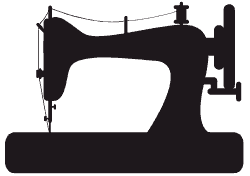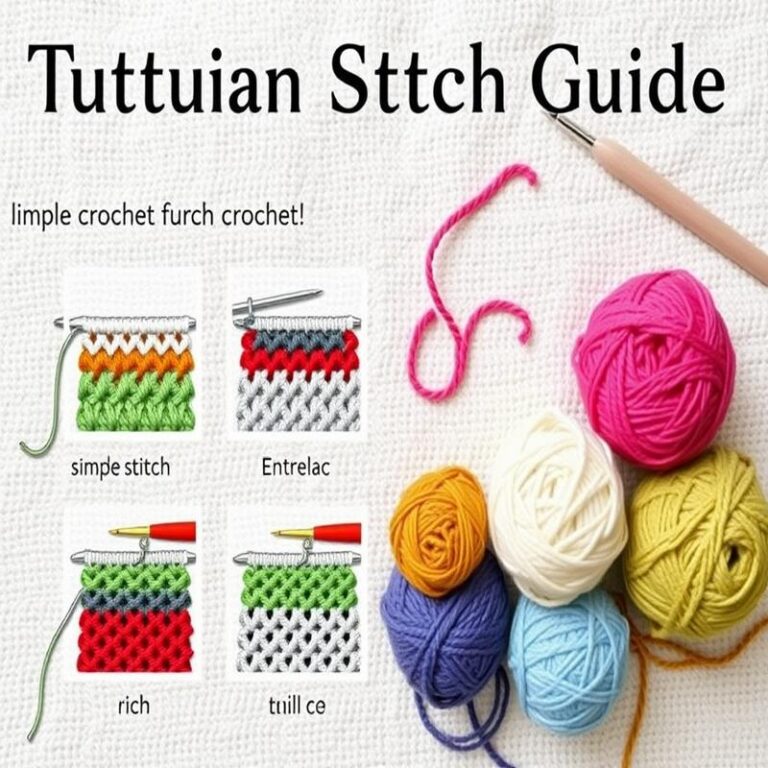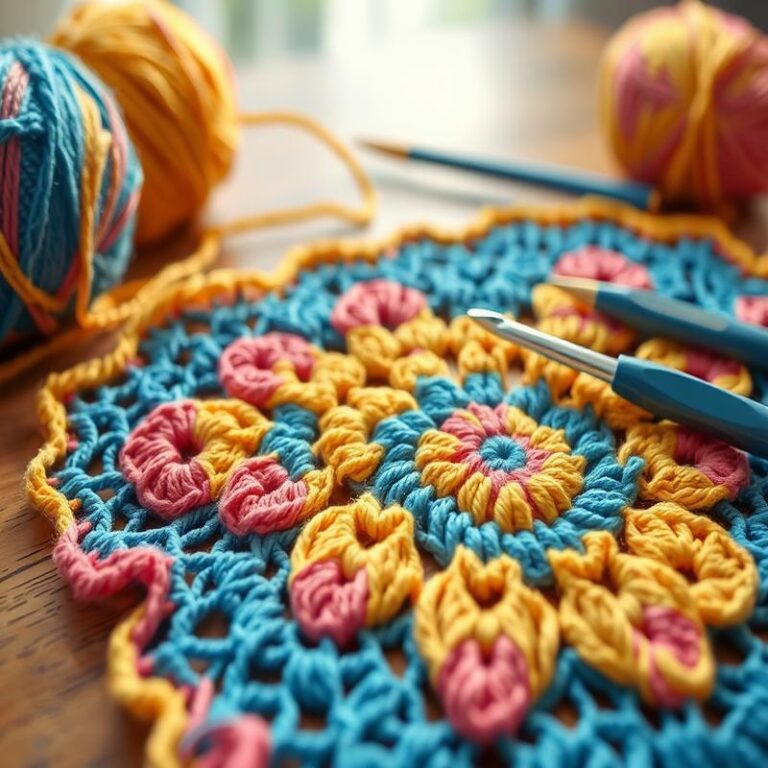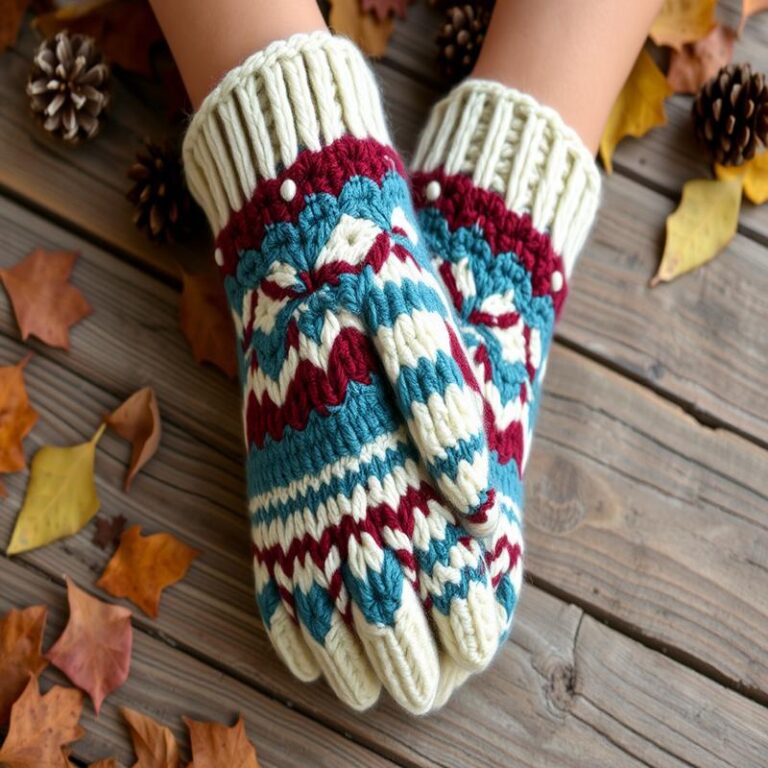shell stitch crochet
Shell stitch crochet is a beautiful and versatile technique that has excited many crafters, including myself. I’ve found it to be a delightful way to add texture and charm to any project. If you’re new to crochet or looking to spruce up your skills, shell stitches can be a fantastic addition to your repertoire.
In this article, I will guide you through the essentials of shell stitch crochet, starting with the basics. If you want to learn how to crochet a shell stitch, check out this handy guide here. You’ll quickly discover how easy and fun it can be!
From making lovely accessories like a cozy shell stitch crochet scarf to crafting warm blankets, there’s so much you can create with this stitch. Want to see a lovely lap blanket? Take a peek here for some inspiration.
Whether you’re just starting or have been crocheting for a while, the shell stitch can enhance your projects and impress your friends. So let’s dive in, get our hooks ready, and explore the world of shell stitch crochet together!
“`html
“`
What is Shell Stitch Crochet?
Shell stitch crochet is a popular technique in the world of crochet that creates a beautifully textured pattern reminiscent of seashells.
This stitch is characterized by its curved, fan-like formations which are achieved through a series of double crochets (or sometimes other stitches) grouped together within the same stitch.
Typically, the shell stitch is made by working multiple double crochets into a single stitch in the previous row, which creates the “shell” effect.
These shells can vary in width and size, allowing crochet artists to customize their projects.
Structure of Shell Stitch
A basic shell stitch usually consists of the following components:
- Multiple double crochets worked into a single stitch (commonly five).
- A chain stitch or two, which spaces out the shells.
- A skipped stitch before starting another shell.
This structured approach allows for a rhythmic flow in crochet work, making it appealing to beginners and seasoned crafters alike.
Applications of Shell Stitch
Shell stitch crochet can be utilized in a variety of projects, including:
- Blankets and afghans: Offering warmth and visual interest.
- Scarves and shawls: Adding elegance to wearable items.
- Home décor items: Such as cushions and table runners.
The versatility of the shell stitch means that it can be adapted to suit numerous styles and patterns, from delicate lace to chunky throws.
For many crocheters, mastering the shell stitch can open the door to a vast array of creative possibilities, making it a foundational skill in the crochet toolkit.
Whether you are a novice looking to enhance your craft or an experienced crocheter searching for inspiration, shell stitch crochet is an essential technique that can elevate any project.
Historical Background of Shell Stitch Crochet

The shell stitch crochet has a rich and varied history that dates back to the early days of crocheting.
Originating in Europe during the 19th century, crochet initially began as a practical craft.
While its precise beginnings are somewhat obscured in time, it is believed that crochet evolved from other forms of lace-making, such as tambour lace and needle lace.
The shell stitch, with its distinctive arched pattern reminiscent of seashells, became popular for its decorative appeal and versatility.
The early practitioners of this craft used simple materials, often coupling thread or yarn with rudimentary hooks, which to this day have been refined but maintain their basic form.
Evolution of Techniques
As crochet techniques evolved, so did the complexity of stitches.
Shell stitch crochet emerged as a favorite among artisans looking to create textured fabrics without excessive effort.
This is why its traditional structure incorporates groups of double or triple crochet stitches that create a wave-like appearance.
Some key milestones in the evolution of shell stitch crochet include:
- The introduction of new yarn types in the 20th century.
- The spread of crochet books and pamphlets, which shared techniques in the mid-1900s.
- Modern times have seen a resurgence of interest, influenced by the DIY and crafting movements.
Global Influence
Over time, the shell stitch transcended regional styles, becoming a beloved technique worldwide.
In various countries, adaptions reflect local cultures and textile traditions.
It is often associated with specific projects:
- Blankets
- Clothing
- Home décor items such as table runners and doilies
This lasting popularity showcases the universal allure of the shell stitch crochet and its ability to blend traditional artistry with contemporary design.
Tools and Materials Needed for Shell Stitch Crochet
To embark on your shell stitch crochet journey, having the right tools and materials is essential for achieving optimal results.
Yarn
Choose a yarn type that complements your project.
Cotton yarn is popular for its durability and lightness,
while acrylic yarn is loved for its versatility and ease of care.
Select the appropriate yarn weight based on your design,
with worsted-weight yarn being a common choice for shell stitch projects.
Crochet Hook
The size of your crochet hook will depend on the yarn weight chosen.
For worsted-weight yarn, a size H (5.0 mm) or I (5.5 mm) hook is often recommended.
Consider using ergonomic hooks,
which provide extra comfort during lengthy crochet sessions.
Measuring Tape
A measuring tape is vital for checking gauge.
This ensures your shell stitches are uniform and that your project will have the correct dimensions.
Scissors
A pair of sharp scissors will help you cut yarn neatly when needed.
They are an indispensable tool for any crochet project.
Yarn Needle
A yarn or tapestry needle is essential for weaving in ends,
particularly after completing your shell stitch crochet work.
This will help achieve a clean finish.
Stitch Markers
Stitch markers can assist in keeping track of stitch counts
and special shell stitch placements, which can be particularly helpful
in more complex patterns.
Other Optional Materials
Some may also wish to have a stitch counter for easier counting,
or blockers for shaping finished projects.
With these tools and materials in hand, you are well-equipped to master the shell stitch.
For more information on the foundational techniques involved, consider visiting a detailed beginner’s guide to crochet, which can be found at https://www.thesprucecrafts.com/crochet-4162930.
Basic Techniques for Shell Stitch Crochet
Shell stitch crochet is a beautiful and popular technique that creates a lovely, textured design.
Understanding the basic techniques involved is crucial for achieving stunning results.
Foundation Chain
The first step involves creating a foundation chain.
Here’s how to start:
- Decide the width of your piece and chain the appropriate number of stitches.
- Remember that the number of chains will determine the size of your final project.
Simplifying the Shell Stitch
The shell stitch is often made up of several double crochets worked into the same stitch or space.
To create a basic shell, follow these steps:
- Begin your row with a specified number of chains (usually three for the first shell).
- Skip a designated number of stitches or spaces in your foundation chain.
- Work a certain number of double crochets (typically five) into the same stitch or space.
- To complete your shell, skip the same number of stitches or spaces and repeat the process.
Consistent Tension
Maintaining consistent tension is essential for uniformity throughout your work.
Ensure that your stitches are neither too tight nor too loose.
This consistency will enhance the overall appearance of your shell stitches.
Joining Rows
When working in rows, it’s important to connect each row accurately.
Typically, you’ll chain a specific number of stitches to begin the next row.
Feel free to experiment with patterns and colors to make your shell stitch projects unique.
Each of these steps is fundamental to mastering the shell stitch crochet technique.
With practice, you’ll gain confidence and be well on your way to creating beautiful pieces.
5. Common Variations of Shell Stitch Crochet
Shell stitch crochet is a versatile technique that allows crafters to explore various styles and designs. These unique variations can lead to distinct textures and visual impacts in projects.
1. Traditional Shell Stitch
The most common form involves creating multiple double crochets into the same stitch, usually worked into a chain stitch or previous row. This creates the characteristic “shell” shape. Typically, four to five double crochets are grouped together.
2. Half-Shell Stitch
In this variation, half double crochets are used instead of double crochets. This produces a more delicate pattern. The half-shell stitch is often utilized in finer yarns and projects requiring a lighter feel.
3. Double Shell Stitch
By stacking two traditional shells together, the double shell stitch creates a more pronounced and layered effect. This technique is great for adding texture to blankets and other large items.
4. Fan Stitch
Similar to the shell stitch but often consists of more stitches, the fan stitch involves creating a series of clusters in a single space, producing a more dramatic decorative effect.
5. Chevron Shell Stitch
Blending shell stitches with a chevron pattern leads to a unique zigzag appearance. This variation allows for creativity in color choices and can enhance visual interest in blankets and scarves.
6. Shell and Spike Stitch Combo
Combining the shell stitch with spike stitches introduces vertical elements within the shell’s curvature, increasing the dimensionality of the completed project.
7. Colorful Shells
Incorporating multiple colors can certainly redefine shell stitch projects. Color changes within shells can emphasize patterns, especially in garments and accessories where eye-catching visuals are desired.
These variations highlight the creative freedom you possess with shell stitch crochet. Exploring these options can inspire unique designs characterized by strong visual appeal and diverse textures.
Patterns and Projects Using Shell Stitch Crochet
Shell stitch crochet is a versatile technique that can be utilized in a variety of projects, transforming basic patterns into something unique and visually appealing.
Popular Patterns
There are numerous patterns that effectively incorporate shell stitch crochet. Some popular ones include:
- Shell stitch blankets: These cozy creations can add texture and warmth to any space.
- Shell stitch shawls: Ideal for layering, shawls often utilize the shell stitch for a beautiful drape.
- Shell stitch bags: These functional accessories are stylish and can be customized with various yarns.
Project Ideas
Engaging in different projects can help crochet enthusiasts hone their shell stitch skills. Here are a few ideas:
- Baby blankets: Soft and sweet, perfect for gifting.
- Table runners: Add a decorative touch to your dining table.
- Scarves: A fashionable accessory to stay warm during colder months.
Combining with Other Techniques
To further enhance the creative possibilities, shell stitch crochet can be combined with other techniques, such as:
- Granny squares: Incorporating the shell stitch into granny square motifs can provide dimension.
- Appliqué: Adding decorative elements using shell stitch can create a stunning focal point.
“Shell stitch crochet opens a world of creativity, allowing you to explore endless patterns and projects.”
With its rich texture and beautiful appearance, shell stitch crochet is not just about technique, but also about exploring new patterns and project ideas to elevate your crafting experience.
7. Tips and Tricks for Mastering Shell Stitch Crochet
When it comes to mastering shell stitch crochet, a few tips and tricks can significantly enhance your skills and confidence.
Practice Consistency
Consistency is crucial in crochet.
Focus on maintaining the same tension throughout your work.
To achieve consistent tension, consider the following:
- Use the same weight of yarn for practice.
- Stick to one crochet hook size until you feel comfortable.
- Make sample swatches to adjust your tension beforehand.
Understand the Structure
Understanding how the shell stitch is constructed will improve your execution.
A typical shell consists of five stitches grouped together in one stitch or space.
Thus, being familiar with the increases and decreases involved in forming these shells can be beneficial.
Use Stitch Markers
Stitch markers are invaluable for complex patterns.
Place them at the beginning of your shell stitches or between shells to help keep track of your progress.
By doing this, you can ensure even spacing and avoid losing your place in the pattern.
Experiment with Different Yarns
Different yarns will create varied effects in your shell stitches.
Experiment with different weights, textures, and colors to see how they influence your final project.
Patience is Key
Shell stitch can be intricate, especially for beginners.
If you make mistakes, unravel your work and try again.
Every crochet project is a learning experience.
Join Online Communities
Joining crochet forums or social media groups can provide essential support and inspiration.
You can learn from experienced crocheters who share their tips regularly.
Ensuring that you ask questions and seek advice when needed can help you avoid common pitfalls.
With consistent practice and a strong understanding of technique, anyone can master shell stitch crochet.
Incorporating these tips into your crochet routine will accelerate your learning journey and increase your enjoyment of this beautiful stitch.
Troubleshooting Common Shell Stitch Issues
When it comes to shell stitch crochet, even seasoned crafters can run into a few common issues that might disrupt their work.
1. Uneven Shells
One frequent problem is having uneven shells, which can detract from the overall aesthetic of your project.
This can result from inconsistent tension or incorrect stitch counts.
To remedy this, consider the following tips:
- Maintain uniform tension throughout your work.
- Count your stitches regularly to ensure consistency.
- Practice your shell stitch technique on swatches to develop a feel for it.
2. Curling Edges
Curling edges can be an annoyance, often caused by using a hook that is too small or by crocheting too tightly.
To resolve curling, you can:
- Switch to a larger hook size to loosen stitches.
- Block your finished piece to help flatten the edges.
- Incorporate a border stitch around your project for added stability.
3. Gaps Between Shells
Gaps between shells can diminish the desired look, which typically presents as a smooth, organized pattern.
This issue often arises from not working enough stitches into the shell pattern.
To eliminate gaps:
- Ensure you are placing the correct number of stitches into each shell.
- Review the pattern instructions to clarify stitch placement.
- Consider using half-shells or adding extra stitches if needed.
Through careful attention to your technique and regular practice, many of these common shell stitch complications can be easily resolved.
Remember that every crochet project is an opportunity to learn and enhance your skills.
Don’t hesitate to revisit patterns and refine your approach to achieve the results you desire.
Advanced Techniques in Shell Stitch Crochet

Shell stitch crochet offers a variety of advanced techniques that can elevate your projects and enhance your skills.
1. Combining Shell Stitches
Combining different sizes of shell stitches can create stunning texture and depth in your work.
- Use small shell stitches between large ones for a dramatic effect.
- Experiment with varying the number of stitches in each shell for unique patterns.
- Incorporate different yarn weights to add contrast.
2. Color Transition Techniques
Integrating color work into shell stitch crochet can significantly enhance visual appeal.
- Try the gradient technique, where you slowly change colors every few rows.
- Implement color blocking by alternating solid color shells with patterned ones.
- Use the intarsia method to create distinct color sections.
3. Textured Shell Stitches
Adding texture to your shell stitches can make your crochet projects more engaging.
| Technique | Description |
|---|---|
| Popcorn Shell | Inserting multiple stitches into one space and then pulling them all together creates a raised effect. |
| Cluster Shell | By clustering multiple stitches together, you form a denser, more textured shell. |
4. Shell Stitch in Different Forms
Shell stitches can be adapted for various forms of crochet, including:
- Round crochet – seamlessly integrating shells into circular designs.
- Graphgan – using shells to create color patterns in tapestry crochet.
- 3D crochet – forming raised shells that create a stunning visual effect.
In conclusion, mastering advanced techniques in shell stitch crochet can open up a world of creativity.
With
1. What is Shell Stitch Crochet?
Shell stitch crochet is a decorative technique that creates a series of fan-like clusters, resembling shells, which can be used to add texture and visual interest to various crochet projects.
The basic concept involves working several double crochets into the same stitch or space, which forms the characteristic “shell” shape.
This stitch is often used in blankets, shawls, and other items, providing both warmth and aesthetic appeal.
Shell stitch can be made in various sizes and styles, depending on the number of double crochets used and the overall pattern structure.
The resulting fabric typically has an undulating, wave-like appearance that can enhance the overall design of the project.
Additionally, shell stitch can be combined with other crochet techniques and stitches to create intricate patterns and motifs.
For beginners, mastering this stitch offers a gateway into more complex crochet designs, making it a favored technique among both novice and experienced crocheters.
Overall, shell stitch crochet is celebrated for its versatility and beauty, making it a popular choice for a wide range of creative endeavors.
2. Historical Background of Shell Stitch Crochet
The shell stitch crochet technique has roots that can be traced back to the 19th century when crochet began to gain widespread popularity.
During that time, crochet was primarily used as a means of adornment for clothing and household items, often incorporating motifs that resembled shells and floral designs.
Historical records indicate that shell stitch patterns became particularly favored in Victorian-era lacework, used to embellish everything from edgings to full garments.
As crochet evolved through the decades, the shell stitch remained a staple among artisans, serving as a testament to the enduring appeal of elegant, nature-inspired designs.
In modern crochet, the shell stitch has been adapted and expanded upon, embracing a myriad of contemporary styles while retaining its traditional charm.
Today, shell stitch crochet is embraced by crafters around the world, often featured in tutorials, books, and online resources, reflecting the enduring love for this stitch and its rich history.
The accessibility of crochet has allowed shell stitch techniques to be passed down through generations, ensuring that this intricate and beautiful style remains alive in contemporary crafting.
3. Tools and Materials Needed for Shell Stitch Crochet
To successfully create shell stitch crochet, a few essential tools and materials are required.
These items ensure that the crocheter has everything needed to produce beautiful results.
Basic Tools:
Conclusion
To wrap it up, shell stitch crochet is a delightful technique that adds a touch of elegance to any project.
Whether you’re a seasoned crocheter or just starting out, this stitch can really elevate your work.
If you need help understanding the shell stitch pattern, check out this guide on how to read crochet patterns.
For beginners, don’t hesitate to dive into this beginner’s guide to crochet to grasp the basics that can help you tackle shell stitches.
If you’re looking for inspiration, you might find some fun shell stitch designs in these free crochet patterns.
Remember, practice makes perfect, so have fun exploring the endless possibilities of shell stitch!
I’d love to hear your thoughts and see your creations!
Please leave a comment below and don’t forget to follow our social media for more crochet tips and tricks!
“`html
Frequently Asked Questions
What is shell stitch crochet?
Shell stitch crochet is a decorative stitch that creates a series of ‘shells’ or fan-like shapes, typically consisting of several double crochets worked into the same stitch or space. This stitch adds texture and visual interest to various crochet projects.
How do you make a shell stitch?
To make a shell stitch, you generally start with a foundation chain and then work a series of double crochets (usually five) into the same stitch or space. After that, you skip a few stitches before repeating the shell in the next space, creating a pattern of shells and gaps.
What types of projects can I use shell stitch in?
Shell stitch can be used in a variety of projects, including blankets, shawls, scarves, and decorative items like table runners and coasters. It is versatile and can enhance the aesthetic value of almost any crochet piece.
Is shell stitch suitable for beginners?
Yes, shell stitch can be suitable for beginners who are comfortable with basic crochet stitches like chain, slip stitch, and double crochet. It’s a great way to practice and improve crochet skills while creating beautiful designs.
Can you modify the shell stitch?
Absolutely! You can modify the shell stitch by changing the number of double crochets used in each shell, or by altering the spacing between them. You can also experiment with different yarns and hook sizes to create varied textures.
What is the best yarn to use for shell stitch crochet?
The best yarn for shell stitch crochet depends on the project you have in mind. Worsted weight yarn is a common choice for blankets and garments, while lighter yarns can be used for more delicate items like shawls. When starting






